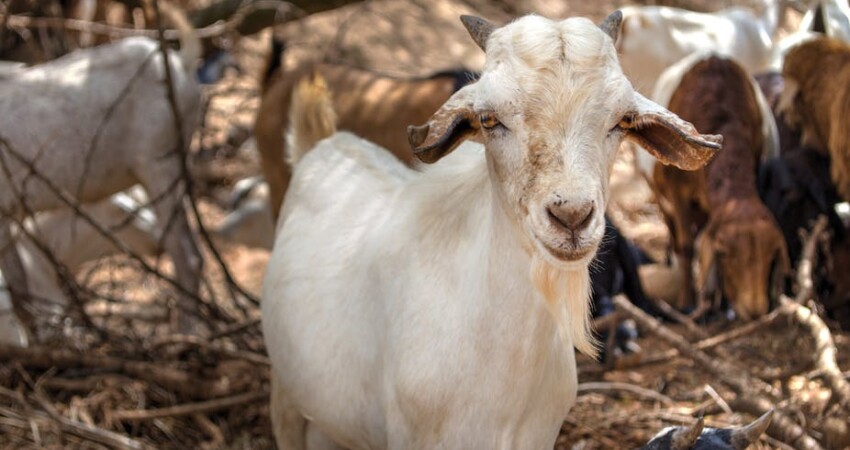

Peste des Petits Ruminants (PPR) is also known as Pseudo-rinderpest or Goat Plague, is an acute or subacute viral disease of goats and sheep characterized by fever, erosions and inflammation in the mouth, lips and tongue, Gastroenteritis, Pneumonia and death. This disease primarily affects goats, sheep are less affected, and cattle are only sub-clinically affected. Humans are not at risk. This disease mainly occurs in the Sahel region of Africa, the area to the south of the Sahara; and the Middle East.
Causes of Goat plague
It is caused by PPR virus which is a member of the Morbillivirus genus of the Paramyxoviridae family. Nomadic goats and sheep in the Sahel have a high innate resistance to PPR and usually undergo subacute reactions.
It is by spread close contact. Close confinement favors outbreaks. The sources of infection are secretions and excretions from sick animals. Infection start when the virus is inhaled by in-contact goats or sheep. The virus enters the new host through the nose and the eyes.
Signs of PPR
The incubation period of this disease is 3 – 8 days. It is followed, in the acute form, by a sudden rise in body temperature to 40 – 41.3 degrees C.
Animals that are affected appear ill and restless, have a dull coat, dry muzzle, congested mucous membranes and a depressed appetite. A clear nasal discharge develops which soon becomes filled with pus with an unpleasant smell. Sneezing may evident. The discharge from the nose and eyes encrusts the nose lading to difficulty in breathing and matts the eyelids hence inability to see clearly
A severe inflammation affects the lower lip and gums and the tissues where the lower front teeth are inserted into the gum.
In more severe cases it may involve the dental pad, palate, cheeks and their papillae and the tongue.
There is intense depression and diarrhea may be very heavy. There is dehydration, hypothermia, followed by death, usually after 5 – 10 days.
Finally, bronchopneumonia / inflammation of the develop. Coughing may develop in the latter stages of the disease.
Deaths in goats apart from the nomadic Sahel goat ranges from 70% to 92% and death usually occurs within a week of the onset of the disease.
This disease is less severe in sheep and is manifested by nasal catarrh, low grade fever, recurring crops of mucosal erosions and intermittent diarrhea. Sheep usually recover after 12 – 16 days.
Treatment / Control
PPR being a viral disease, it has no specific treatment. The Veterinary authorities must be notified at once of any symptoms in goats and sheep suggestive of PPR. Control by restriction of movement of susceptible animals. Additionally, vaccination is very key.
Any sick animals must be immediately isolated and contact animals vaccinated. During an outbreak, regulation of markets and movement is of paramount importance in the control.
 Contact Jaguza Support
Contact Jaguza Support